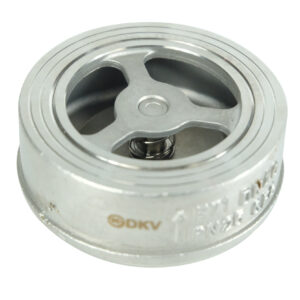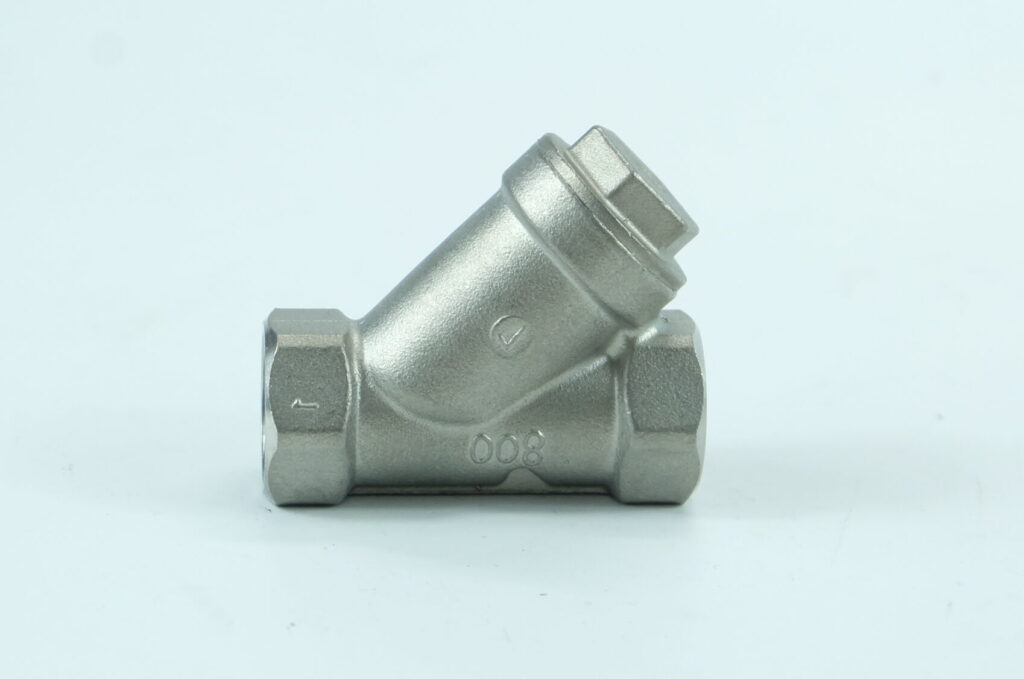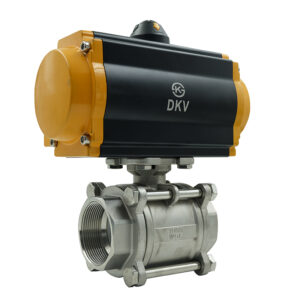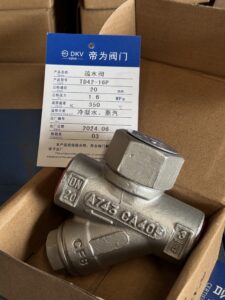
What Is a Check Valve and How Does It Work?
What Is a Check Valve and How Does It Work? Introduction — Why Check Valves Matter in Industrial Systems In every pipeline system, fluid needs

In industrial fluid systems, one of the most common causes of equipment failure is the accumulation of debris, rust, or particulate matter within the pipeline.
This can lead to clogging, increased pressure drop, and costly downtime.
A Y strainer filter is a simple yet essential component designed to remove unwanted solids from liquid, steam, or gas pipelines.
In this article, we explain how Y strainers work, their functions across different industries, design options, and key selection considerations for engineers and procurement managers.
A Y strainer is a mechanical filter device that uses a perforated or mesh straining element to trap solid particles while allowing the medium (water, oil, steam, or gas) to flow through.
Its name comes from its Y-shaped body design, which provides both flow efficiency and convenient access for cleaning.
The primary function is to protect pumps, valves, meters, and other downstream equipment from damage caused by particulate matter.
Procurement tip: Always confirm the required mesh size based on the fluid and application—too fine may cause pressure drop, too coarse may allow debris through.
Inside the Y strainer, the fluid enters through the inlet and passes through a strainer screen or mesh.
Solids larger than the mesh openings are captured and collected in the strainer’s pocket, while clean fluid continues downstream.
Periodic cleaning is necessary—either manually by removing the screen or via a blow-off connection that allows debris to be discharged without disassembly.
For example, in steam applications, the strainer prevents scale and rust from,entering sensitive equipment like control valves or steam traps.
In liquid applications, such as cooling water pipelines, the strainer ensures pumps operate without cavitation or blockage.
Engineer’s note: Consider installing a blow-off valve for high-debris pipelines to reduce maintenance time.
Y strainers are widely used across industries due to their versatility:
Petrochemical: Protects flow meters and control valves from sand and rust particles in pipelines.
Water Treatment: Prevents debris from entering pumps and UV filtration systems.
Power Generation: Ensures turbine lubrication and cooling systems remain free of contaminants.
Pharmaceutical: Maintains process purity by removing particulates before sensitive production steps.
HVAC Systems: Filters particles from chilled and hot water systems, reducing wear on heat exchangers.
Case example: A steel plant reduced pump maintenance costs by 25% after installing Y strainers in its cooling water system.
Y strainers come in different materials and pressure classes depending on the operating environment:
Cast Iron: Suitable for low-pressure water and HVAC systems.
Carbon Steel: Ideal for high-pressure applications in oil & gas pipelines.
Stainless Steel: Excellent corrosion resistance for chemical, food, and pharmaceutical industries.
Bronze: Commonly used in marine and seawater systems.
Strainer screens can be made of stainless steel, with different mesh sizes (typically 20 to 300 microns) depending on required filtration precision.
Buyer’s note: Always verify that the selected material matches both the media and operating pressure to ensure long service life.
Choose the correct mesh size to balance filtration efficiency and pressure drop.
Specify material compatibility with the medium (corrosive, high-temp, etc.).
For continuous operations, select strainers with blow-off valves for easier cleaning.
Confirm compliance with ISO 9001, CE, and API standards for industrial projects.
Plan periodic inspections to avoid clogging and maintain optimal flow efficiency.
Reminder: Don’t underestimate maintenance access—strainers should be installed where screen removal or blow-off is practical.
The Y strainer filter plays a vital role in protecting pipelines, pumps, and valves from debris damage.
By removing unwanted solids, it extends equipment life, reduces downtime, and improves operational efficiency.
📩 Contact DKV Valve today to request datasheets, quotations, or consultation for your industrial filtration needs.
With 40+ years of expertise and certified quality, we deliver solutions trusted by engineers in over 60 countries.

What Is a Check Valve and How Does It Work? Introduction — Why Check Valves Matter in Industrial Systems In every pipeline system, fluid needs

What Is a Pneumatic Valve ? In modern industries, the performance of a valve often determines the efficiency, reliability, and safety of a process system.Pneumatic

What Is a Steam Trap & How Does It Work? Introduction — The Hidden Hero in Steam Systems In every industrial steam system — whether

Why Use a Globe Valve Instead of a Gate Valve? A Practical Guide for Engineers & Procurement Managers Introduction — Making the Right Valve Choice

What Is the Main Advantage of a Butterfly Valve? Introduction — why this question matters When you plan an industrial piping system, valve selection affects

Electric Valves: Comprehensive Guide for Industrial Applications In modern industrial automation, electric valves play a critical role in regulating fluid flow with precision and reliability.
Poly Center T41601, Le Cong Town, Shunde District, Foshan City, Guangdong Province, China
We will contact you within 1 working day, please pay attention to the email with the suffix “@dkvchina.com”.
We will contact you within 1 working day, please pay attention to the email with the suffix “dkvchina.com”.